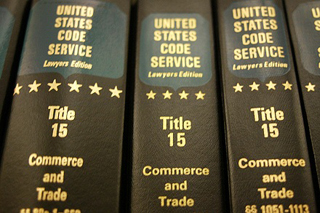
U.S. trade and commerce regulations. (Image courtesy of Daniel Bersak.)
Instructor(s)
Prof. Michael Pollitt
MIT Course Number
14.23
As Taught In
Spring 2003
Level
Undergraduate
Course Description
Course Features
Course Description
The objective of this course is to introduce you to the role of government in markets where competitive equilibria “fail.” In this course we will emphasize the importance of market structure and industrial performance, including the strategic interaction of firms. We will examine the behavior of individual markets in some detail, focusing on cost analysis, the determinants of market demand, investment behavior, market power, and the implications of government regulatory behavior. The course will be broken into three parts. In the first part, we will review firm behavior and the theory of the market. Here, we will discuss perfectly competitive markets (our “benchmark”), efficiency, market structure, strategic competition, and productivity. Once the foundations of the market are well understood, we will then move on to the second part of the course, where we will study “economic” regulation. Here, we will look at the behavior of natural monopolies and regulatory options for dealing with them. And in the third part of the course, we will study “social” regulation—focusing on environmental, health, and safety regulation.


